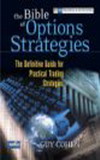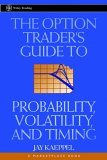Positive Divergence in SPY Chart
 I seldom use technical indicators, and even when I do, I don't use them for oversold/overbought purpose. As you all can see in this market, oversold can remain oversold for a long time or get even more oversold. When I do use them, its for the purpose of identifying divergence. Here's a look at the SPDR Trust (AMEX:SPY) chart. I'm using the SPY chart because it reflects the gapping action (see the empty spaces in between candlesticks), unlike S&P 500 index.
I seldom use technical indicators, and even when I do, I don't use them for oversold/overbought purpose. As you all can see in this market, oversold can remain oversold for a long time or get even more oversold. When I do use them, its for the purpose of identifying divergence. Here's a look at the SPDR Trust (AMEX:SPY) chart. I'm using the SPY chart because it reflects the gapping action (see the empty spaces in between candlesticks), unlike S&P 500 index.The SPY printed a new low on 10 Oct and a few days back, it tested that low and held. At the lower panel, we see the MACD printing higher lows. This is positive divergence. While this could be the first signal that may point to a more sustainable rally, bear in mind that we are still in a downtrend and bear market. This could well be one of those violent bear rallies. Remember: The trend is your friend until it is broken. Until we see higher highs and higher lows, the current trend is still intact. Next resistance I see is at 100, then 110 (gap fill).
Such volatile market can be highly rewarding for day traders, but nightmare for swing traders. If you must hold overnight, please keep your position size small such that even 100% loss is well within your risk tolerance. Another reason why I don't recommend holding options overnight is also because Implied Volatility (IV) is sky high now, meaning options are very expensive. A 10% drop in IV overnight can easily wipe off your gains and more even if the stock moves in your direction.
There are some very good day traders out there and I recommend you read MY DEL.ICIO.US on the left panel to see how they day trade in such markets. There are many gems in this bookmark.






















